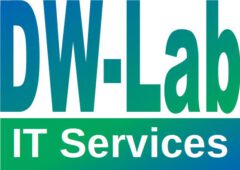Big changes in the IT market are taking place. We see cloud services all around changing the delivery model of software from product sale to a software as a service model.
IBM also delivers more and more parts of its portfolio in a software as a service model. One of the very first offerings is IBM Monitoring. Based on the IBM Service Engage platform the monitoring infrastructure is delivered to the customers.
But how does it work?
IBM delivers the server components in a Softlayer® data center. The infrastructure is hidden behind a firewall in combination with a reverse proxy. All customer agents and client devices are connected by using the HTTPS port (Port 443) on the announced service address.
How are the different customers separated from each other?
The user clients are connected to the correct customer specific monitoring environment based on the user credentials given on the login page.
The agents have customer specific credentials in their setup and are generated for each customer exclusively. These agents are provided upon registration for the service and can be downloaded on customer request.
How many agents should a customer have?
Well, there is no minimum number of agents a customer has to request to become eligible for IBM’s monitoring offering. However, there is a maximum number of agents a single instance of this monitoring infrastructure can serve. Depending on the complexity of the monitoring rules you apply we expect a maximum of about 1000 agents per infrastructure instance.
What kind of agents are available?
The following agents are currently available for the SaaS offering:
|
|
There are several other agents planned to be released within the next few weeks or months, but I’m not authorized to write about in detail in this blog. If you want to more details, or if you have specific requirements, drop me a message, and I’ll come back to you with more specific information.
How are these agents installed?
The installation procedure is now pretty simple. The following videos show the installation on Linux and Windows. After downloading the appropriate packages for the target OS platform, the installation process can be initiated. The redesigned installation process on Linux follows now the standard installation rules for the OS platform (here now RPM).
The new IBM Monitoring is different from the previous one. The new lightweight infrastructure is available within a few minutes. The agents are easy to install and are simple to configure. The monitoring solution comes with a new user interface based on HTML without the need of any Java Runtime Environment. Because of that, the user interface is now also available on touch pads and smart phones.
Follow me on Twitter @DetlefWolf, or drop me a discussion point below if you have further question regarding the new IBM Monitoring.
